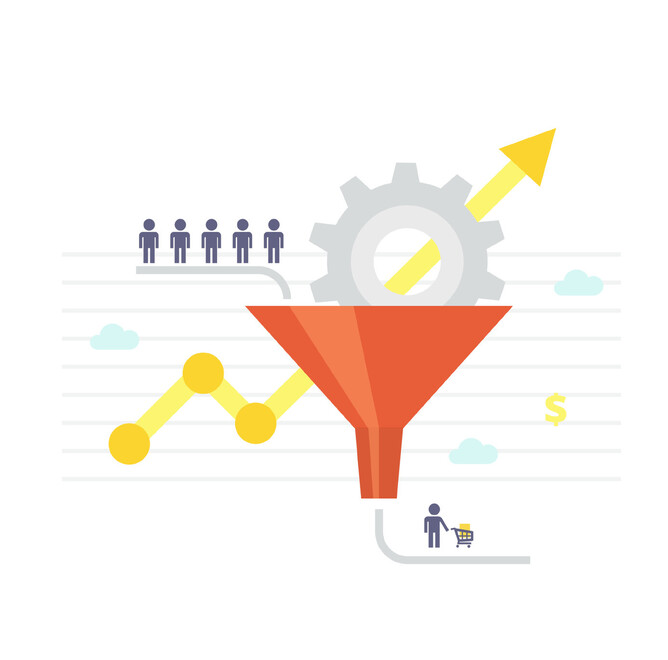When looking at how customers interact with your e-commerce website, it’s important to have a reliable way of measuring this. The most prominent metric is the e-commerce conversion rate.
A conversion rate relates to the percentage of visitors who come to your website and complete a desired goal -- whether that’s making a purchase, signing up or calling your business., out of all visitors to your site.
When internet users leave your e-commerce site without interacting with its content or taking a required action, it’s wasting your time and money. Little or no user engagement also means higher bounce rates, which negatively impacts the way your website is organically ranked in search engines.
A successful e-commerce website shouldn’t just drive traffic, but also needs to convert visitors into customers who are willing to buy your products. Conversion rate optimisation (CRO) is the best way to improve your e-commerce sales.
CRO helps you generate new leads, convert website visitors into paying customers, increase sales and generate more revenue – without increasing your marketing budget!
In addition, a high e-commerce conversion rate is a positive sign that your visitors find your site content useful and have a positive user experience. Brand equity is also improved with a steady flow of regular site visitors and loyal customers.
Optimising Your E-Commerce Website for High Conversion Rates
Here are some simple yet effective practices you can implement to improve your CRO:
1. Analyse Your Website Data
Collecting your website data is an excellent way to identify customer behaviours and patterns. Software such as Google Search Console can provide you with a clearer picture of how people behave once they land on your website and help determine metrics like the number of sessions and bounce rates.
Similarly, Google Analytics helps pinpoint the decline in traffic from one step of the sales funnel to the next. This type of data is a great way to recognise what aspects of your site need urgent attention and optimisation.
2. Speed Up Pages
Websites that take longer than three seconds to load are already in trouble, as you’re facing the potential of lost sales. If your website takes too long to load, visitors are most likely to leave. Here are a few things you can do to improve your website speed and performance:
a) Minify and combine HTML, CSS, and JavaScript files.
b) Minimise HTTP requests.
c) Reduce images sizes.
d) Enable browser caching.
e) User a content delivery network.
f) Remove unnecessary plugins/extensions.
g) Choose a suitable hosting plan and a reliable hosting partner.
Google PageSpeed Insights are also a valuable way to gain knowledge on how to improve your site’s performance.
3. Simplify Navigation
A website’s navigation should be simple and user friendly if you want to ensure that visitors stay on your website and engage with its content. With such a competitive e-ecommerce market, customers will choose to shop from sites they know they can find their desired products or information fast and conveniently. Follow the “three clicks away from the homepage” rule to reduce the risk of customers leaving your site. Include products in multiple relevant categories for customers to easily locate their desired items without spending much time. The easier it is for a customer to find what they are looking for, the more likely they are to convert.
Other practices such as high-quality images and videos, adding clear and intelligent CTA’s, offering promotional offers and discounts, integrating multiple payment options and including engaging and detailed product information are also excellent practices you can implement to improve your CRO.


